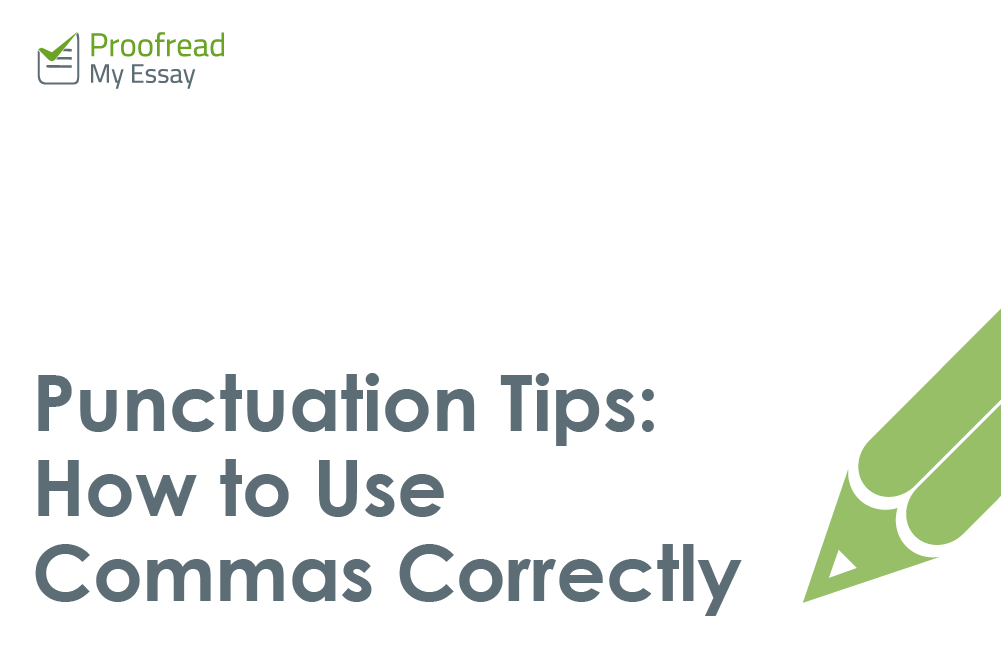For such a common punctuation mark, the comma is a tricky fellow. Certainly, this is reflected in how often we see commas misused in all kinds of writing.
However, misplaced commas can look bad in academic work. To ensure clarity and accuracy, we’ve prepared this quick guide to how and when the comma should be used.
When to Use Commas
The complete list of rules for comma use is very long (and occasionally self-contradictory), so we’d be fools to try and explain it all here. Some of the most important, however, include:
1. Lists
Add a comma between items in lists of three or more things. This isn’t always necessary before the final item, but it can aid clarity sometimes (this is known as the ‘Oxford comma’):
My three favourite vegetables are aubergines, parsnips, and rudely-shaped potatoes.
2. Introductory Words, Clauses and Phrases
When a word or phrase at the beginning of a sentence adds information to or modifies what follows, it’s often followed by a comma:
Luckily, nobody commented the shape of the chilies.
3. Independent Clauses Joined by a Coordinating Conjunction
When two independent clauses are connected by a coordinating conjunction, the conjunction should be preceded by a comma:
I thought the potato looked very rude, but they assured me I was imagining it.
6. Parenthetical Information
Commas can also be used to set apart non-essential information in a sentence:
The tomato, which was very oddly shaped, attracted many admiring glances.
5. Coordinate Adjectives
‘Coordinate’ adjectives are equally-weighted adjectives that modify the same noun. You can tell if adjectives are coordinate by seeing how they sound with the word ‘and’ between them.
For instance, while we would say ‘a dark and stormy night’, we wouldn’t say ‘a big and bad wolf’. This is because ‘dark’ and ‘stormy’ both modify ‘night’ equally, whereas ‘big’ modifies the noun phrase ‘bad wolf’, since the ‘badness’ of the wolf is more important than its ‘bigness’.
Coordinate adjectives like these are often separated using commas:
Find this useful?
Subscribe to our newsletter and get writing tips from our editors straight to your inbox.
The mood of the dark, stormy night was lightened by the amusingly-shaped carrot.
6. Contrasting Information
When a contrast appears at the end of a sentence, it should be set apart with a comma:
Vegetables are supposed to be food, not a source of humour.
7. Introducing Quotations
Use a comma to separate quoted text or dialogue from the rest of a sentence:
Mr Kipling says, ‘Some fruits are not suitable for children.’
However, this is not necessary after the word ‘that’:
Mr Kipling says that ‘Some fruits are not suitable for children.’
8. Direct Address
When something is directly addressed to another person, their name or title should be separated from the main statement by a comma:
Son: Dad, why are you laughing at that parsnip?
Father: I’ll tell you when you’re older, Billy.
A Matter of Style
While the rules above can be helpful, sometimes it’s better to omit a comma or rephrase a sentence so that fewer commas are needed if it improves readability.
Using too many commas, for example, will make sentence, especially a longer sentence, like this one, quite difficult to read, since it will be full of unnecessary… pauses.
As a result, comma use can be a matter of style. Just remember to check for clarity and to use a consistent approach throughout your document.
